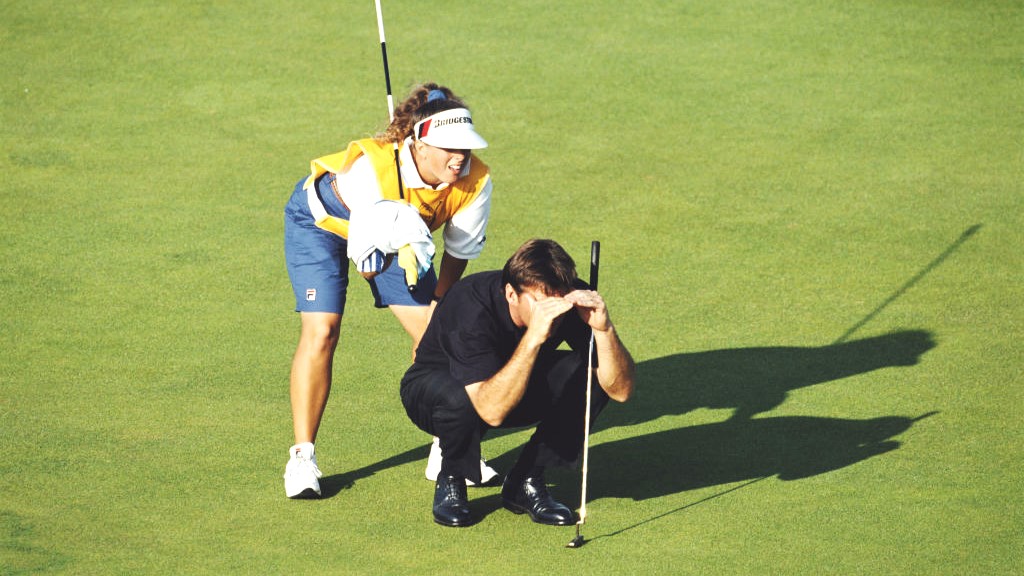My Journey Looping on the Tour
Alright, let’s talk about what it’s actually like being a caddy out there on the PGA Tour. People see us on TV, walking alongside the big names, and maybe think it’s just about hauling the bag and handing over clubs. Trust me, it’s way more involved than that. My own path into this world wasn’t exactly planned.
I started out like a lot of guys, just looping at a local course back home. Needed some cash, loved golf, seemed like a good fit. Spent summers learning the ropes, literally. Figuring out distances by eye, learning how different lies affect the shot, how to rake a bunker properly – all the basics. You quickly realize it’s about more than just knowing golf; it’s about knowing your course, inside and out.

Making the jump to the pro level? That was different. You gotta really know your stuff. First time I got a chance to work with a player trying to make it, the pressure felt huge. Suddenly, it wasn’t just about finding the ball; it was about his livelihood.
The Day-to-Day Grind
Let me paint you a picture of a typical tournament week:
- Early Starts: We’re usually at the course before sunrise, especially on practice days. Gotta walk the course, get the latest pin positions, check out any changes.
- Course Mapping: We chart everything. Sprinkler heads, slopes on the green, tricky spots. You’re building a detailed map in your yardage book and in your head.
- Practice Rounds: This is crucial. You’re confirming distances with your player, seeing how the course is playing, figuring out strategy for each hole.
- Tournament Days: It’s intense. You’re up early, making sure the bag is stocked – towels, balls, drinks, snacks, rain gear, umbrella. You check the weather constantly. Then it’s about the walk, usually 6-7 miles, carrying a bag that weighs maybe 40-50 pounds.
More Than Just Carrying the Bag
Sure, calculating yardages is a big part. You gotta be spot on. Using lasers, your book, factoring in wind, elevation changes, even temperature sometimes. But that’s just the start.
You become a bit of everything out there:
- Strategist: Talking through shots, suggesting clubs, discussing where to miss if things go wrong.
- Green Reader: Helping decipher the breaks and speed on the greens. Two sets of eyes are often better than one.
- Psychologist: This is huge. Keeping your player level. Knowing when to talk, when to shut up. Offering encouragement after a bad shot, keeping them focused after a good one. You ride the emotional rollercoaster with them.
- Rule Keeper: Knowing the basic rules to help avoid penalties.
- Logistics Guy: Making sure they eat and drink, keeping clubs clean, handling the little things so they can just focus on hitting the ball.
You hear about legendary caddies, guys who were on the bag for multiple majors. It wasn’t luck. They built incredible partnerships with their players. It’s all about trust. Your player has to trust your numbers, trust your reads, trust your judgement under pressure. Building that relationship takes time and effort.

The Reality of It
It’s not glamorous all the time. You’re dealing with travel, hotels, different time zones. You miss stuff back home. The weather can be brutal – scorching heat one week, freezing rain the next. And your income depends entirely on how well your player performs. If they miss the cut, you often don’t make much, if anything, that week beyond maybe a base rate.
But man, when your player hits a great shot after you talked it through, or when they sink that crucial putt you helped read, there’s a real sense of accomplishment. Being inside the ropes, feeling the pressure of competition at the highest level… it’s addictive. You learn so much about managing pressure, about strategy, and about people. It’s a tough job, physically and mentally demanding, but for those of us who love the game, it can be incredibly rewarding to be a part of it.

















